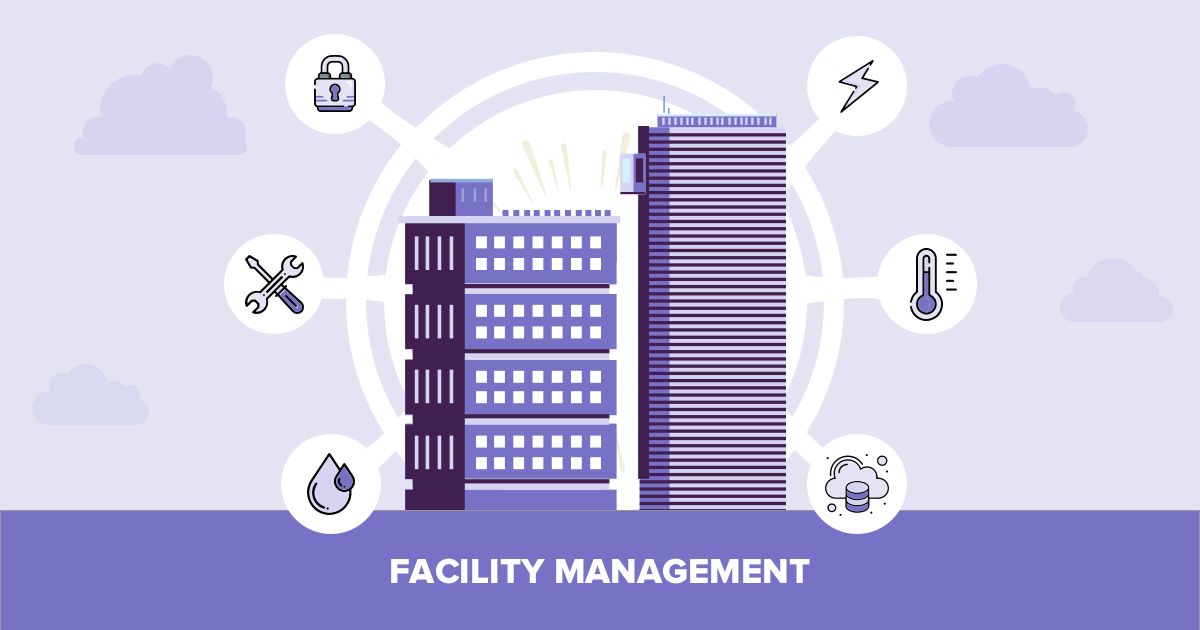Secret Trends Forming the Future of Center Management in 2024
As we look in advance to 2024, the landscape of facility management is positioned for considerable change, driven by several key fads. The assimilation of clever building technologies and a shift towards data-driven decision-making promise to boost operational performance while prioritizing sustainability in technique.
Smart Building Technologies

Smart structure technologies incorporate a broad selection of systems, including smart lighting, a/c controls, and protection systems. By integrating these systems, center supervisors can keep an eye on and readjust parameters in real-time, resulting in substantial decreases in energy waste and functional costs. Smart sensing units can discover tenancy levels and change lighting and temperature accordingly, making sure that power is just made use of when required.
Moreover, these innovations facilitate improved data collection, allowing organizations to track use patterns and determine chances for further enhancements. The implementation of smart building modern technologies not only adds to sustainability goals but likewise creates much healthier workplace that can boost employee efficiency and fulfillment.
As we move into 2024, the fostering of smart building modern technologies will likely speed up, showing a wider shift in the direction of even more intelligent, receptive, and lasting facility monitoring practices.
Data-Driven Decision Making
Increasingly, companies are leveraging data-driven choice making to boost center administration methods. By utilizing information analytics, center supervisors can derive workable understandings that substantially enhance operational effectiveness and source allowance. The integration of sophisticated innovations, such as IoT sensors and real-time tracking systems, makes it possible for the collection of huge amounts of data on building efficiency, occupancy prices, and energy intake.
This riches of details allows facility managers to recognize patterns, forecast maintenance demands, and proactively address issues before they escalate. For example, anticipating analytics can forecast tools failings, lowering downtime and repair expenses. Additionally, data visualization tools help with much better communication among stakeholders, making sure that notified decisions are made collaboratively.
Moreover, data-driven approaches improve tactical planning by enabling center managers to analyze the efficiency of existing methods and make notified choices pertaining to investments in modern technology or infrastructure. As organizations progressively focus on functional excellence, data-driven decision production is positioned to end up being a keystone of effective facility management strategies in 2024 and beyond. Ultimately, the capability to take advantage of data successfully will encourage companies to create a lot more efficient, efficient, and resistant centers.
Sustainability and Environment-friendly Practices
The focus on data-driven decision making naturally aligns with the growing concentrate on sustainability and green practices within center management. As companies increasingly prioritize ecological responsibility, center supervisors are leveraging analytics to optimize source usage, minimize waste, and minimize carbon impacts. This critical approach allows the assimilation of energy-efficient systems, such as LED lights, smart heating and cooling controls, and sustainable power sources into facility procedures.
Additionally, the implementation of lasting techniques prolongs beyond energy intake. Center managers are advertising and adopting environmentally friendly materials recycling efforts to produce a round economic situation within their centers. This not just improves the ecological profile of the company but additionally fosters a culture of sustainability among workers.
Conformity with environmental regulations is an additional critical facet driving the adoption of environment-friendly practices. By utilizing information analytics, center supervisors can keep an eye on conformity metrics and determine locations for improvement, guaranteeing adherence to global and local sustainability requirements.
Hybrid Work Designs
A substantial shift towards hybrid work versions is reshaping the landscape of center administration in 2024. This paradigm integrates in-office and remote work, necessitating a reevaluation of room utilization, resource allotment, and employee interaction methods. Organizations are increasingly identifying the relevance of adaptable work spaces that cater to diverse requirements and choices.
Facility managers need to adapt by implementing functional office designs that support collaborative initiatives while giving areas for concentrated job. This includes the assimilation of technology to assist in seamless interaction and partnership among remote and in-office employees. Smart building solutions, geared up with sensing units and analytics, enable real-time monitoring of area usage, enabling organizations to maximize her latest blog their atmospheres successfully.
In try this web-site addition, hybrid job models emphasize the demand for reliable center administration that prioritizes employee experience. In essence, the hybrid work version is reinventing center management, motivating an aggressive method to satisfy the progressing demands of the labor force.
Boosted Resident Health
As companies accept hybrid job models, an increased focus on owner health is coming to be essential to facility administration techniques. Facility Management. This shift identifies that a healthy and balanced and pleased labor force directly influences efficiency and retention rates. Facility supervisors are currently focusing on environments that promote psychological and physical health, integrating components such as all-natural illumination, biophilic layout, and accessible wellness resources
Technology plays an essential role in this advancement. Smart structure systems can check ecological variables and readjust settings in real-time, guaranteeing optimal comfort degrees - Facility Management. Additionally, responses mechanisms, such as tenancy sensing units and worker surveys, allow facility managers to constantly refine wellness initiatives based on occupant needs.

Conclusion
In 2024, the future of center monitoring will certainly be dramatically affected by the assimilation of smart building innovations and data-driven decision-making, promoting improved functional effectiveness. These fads collectively highlight the evolving landscape of facility administration in reaction to modern challenges and opportunities.
Center managers are embracing environment-friendly products and promoting recycling campaigns to develop a round economic situation within their centers.A substantial shift in the direction of crossbreed work versions is improving the landscape of center monitoring in 2024.Furthermore, hybrid job models stress the requirement for efficient facility management that prioritizes employee experience.As organizations embrace hybrid job models, an enhanced emphasis on check my source resident health is ending up being important to center management techniques.In 2024, the future of center monitoring will be considerably influenced by the combination of smart structure innovations and data-driven decision-making, cultivating boosted operational effectiveness.